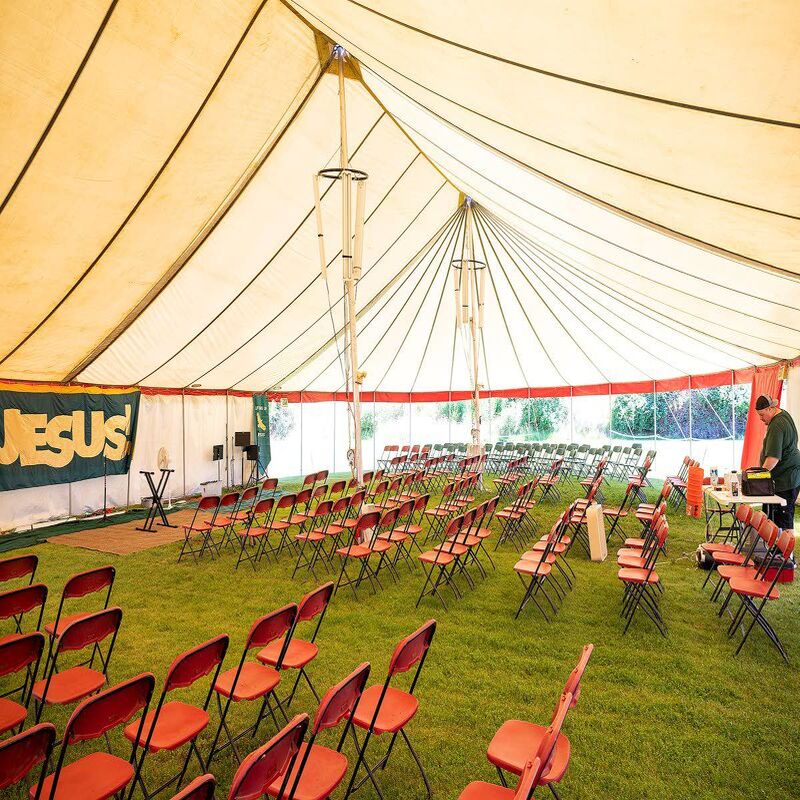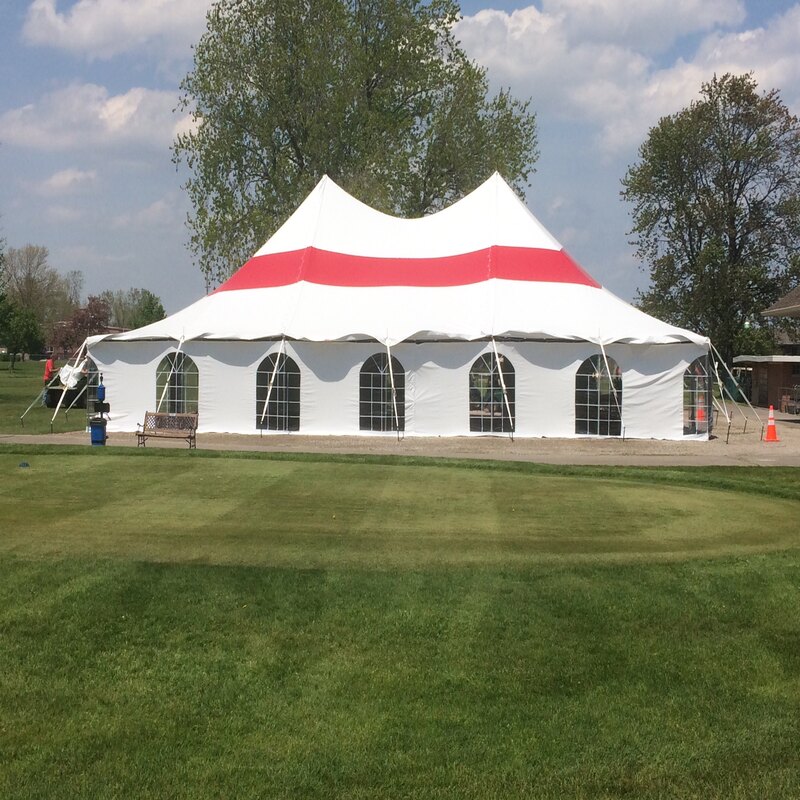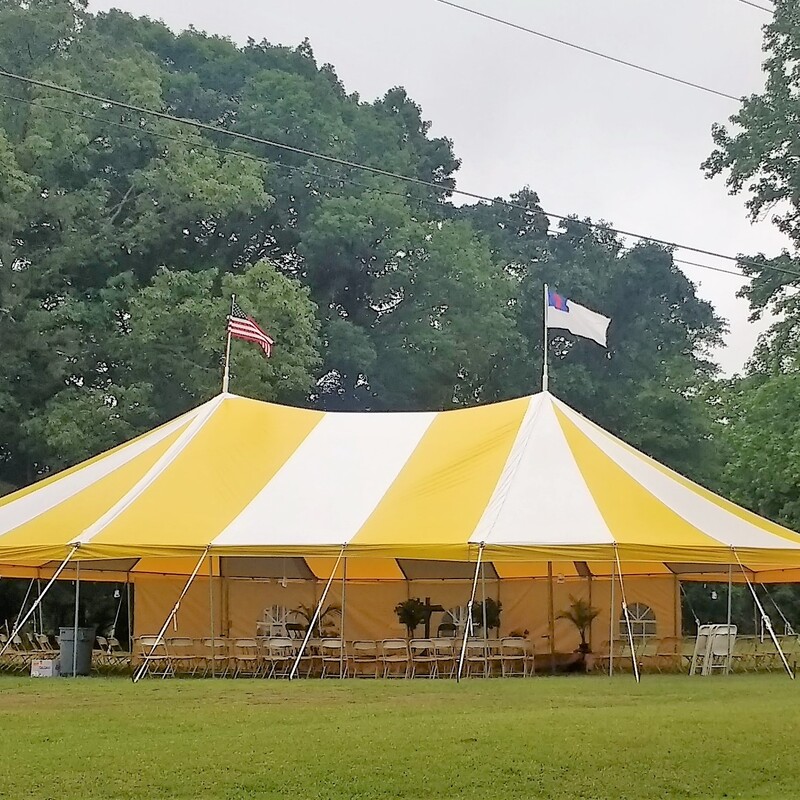Introduction
Tent revivals have played a significant role in the history of American Christianity. Often associated with the Great Awakenings, these events have provided a unique atmosphere for spiritual renewal and connection. Pastors and evangelists would set up large tents outdoors, gathering large crowds for a series of passionate services. These revivals serve as both a spiritual event and a community gathering, where people come together to worship, sing, and listen to sermons that inspire and challenge them. Over the years, the format of tent revival has evolved, yet the essence of this practice remains deeply rooted in faith and fellowship.
Traditionally, tent revivals were held in rural areas where access to churches might have been limited. However, the purpose extended beyond mere geographical convenience. They aimed to create a temporary sanctuary where individuals could immerse themselves in a spiritual experience. The vibrant atmosphere is often fueled by music, prayer, and emotional testimonies. Consequently, participants often experience a profound awakening of faith. The simplicity of these events fosters an environment where everyone feels connected. Therefore, attendees can openly discuss their struggles and victories in life, further strengthening their communal bonds.

The Historical Context of Tent Revivals
The Origins of Tent Revivals
The origins of tent revivals can be traced back to the early 19th century. During this transformative period, many individuals sought new spiritual expressions, free from usual constraints. Evangelists like Charles Finney popularized this method of preaching. They felt that outdoor gatherings would attract large crowds, uniting diverse communities in worship. The tents served as both a practical solution and a symbol of faith unconfined by traditional church structures. Moreover, the outdoor setting encouraged spontaneity and emotional openness, leading to powerful worship experiences.
The method was effective because it reached out to those who might not attend traditional churches. By providing an informal space for worship, evangelists captured the attention of the marginalized. Consequently, many people found a welcoming environment to explore their faith. The excitement surrounding these events quickly spread, inspiring similar gatherings across various states. Therefore, the tent revival became a significant method of outreach by the late 19th century. It was not merely about revival but also about creating genuine connections among attendees.
Social and Cultural Influences on Tent Revivals
Social and cultural influences heavily impacted the evolution of tent revivals. The expansion of the American frontier brought new populations and diverse religious beliefs. Thus, tent revivals provided a platform for various denominations to coexist. People from different backgrounds and faith traditions gathered to share their experiences and beliefs. This blending of cultures created a rich tapestry of testimonies, preaching styles, and music. Consequently, those who attended were often enriched by the variety of expressions of faith.
During the mid-20th century, television and technology started to change the landscape of religious gatherings. Additionally, more people sought spiritual experiences outside traditional settings. Unlike static church events, tent revivals created excitement and anticipation, drawing people from all walks of life. Preachers often used charismatic styles to captivate audiences, emphasizing storytelling and emotional engagement. As a result, tent revivals became a powerful cultural phenomenon, making spirituality accessible in new ways while providing a sense of community.

The Structure and Atmosphere of Tent Revivals
Designs and Layout of Tents
Tent revivals feature a striking visual presence that cannot be overlooked. Typically, large canvas tents are set up in open fields or under expansive skies. The tents are spacious, allowing thousands of attendees to gather comfortably. The arrangement includes seating for participants, often in the form of folding chairs or benches. This facilitates a sense of togetherness, as everyone is oriented toward the speaker at the front. A central pulpit or platform is elevated to help the evangelist engage with the audience effectively.
Decorations and lighting often create an inviting atmosphere. Banners with uplifting messages may adorn the tent, emphasizing hope and community. In many cases, strings of lights are used to create a warm, welcoming environment as the sun sets. Such thoughtful designs contribute to an atmosphere conducive to worship and connection. By immersing participants in this unique space, the revival experience becomes memory-making and impactful. This deliberate setup plays a vital role in fostering participation and community engagement.
Activities and Engagement Within the Tent
The activities during tent revivals go beyond sermons and worship services. They often include various outreach initiatives, community service opportunities, and social gatherings. For instance, food stalls may offer refreshments, creating a festive spirit. These interactions promote fellowship, allowing attendees to form friendships and discuss their faith journeys. Through shared meals and conversations, spiritual bonds tend to deepen naturally.
Moreover, participation is typically encouraged, enabling diverse expressions of faith. Attendees can engage in singing, testimony sharing, and prayer. Special moments arise when individuals feel moved to share personal stories of struggle and redemption. These honest disclosures create emotional connections. Consequently, the collective atmosphere brings communities closer while fostering healing experiences. Attendees often leave revitalized, armed with new insights about faith and personal growth. The shared commitment to spiritual exploration unites them even after the revival concludes.
The Impact of Tent Revivals on Communities
Spiritual Renewal and Growth
Tent revivals significantly impact spiritual renewal and growth within communities. They offer an opportunity for participants to reassess their relationships with faith and the church. For many attendees, the revival serves as a catalyst for change. In a world often characterized by uncertainty, the spiritual focus can be a source of hope. Attendees often describe transformative experiences that help them reconnect with their faith. This renewed enthusiasm positively influences their lives beyond the tent.
Moreover, spiritual growth often translates into improved community dynamics. Individuals feeling revitalized may become more involved in local churches or outreach programs. Consequently, the sense of community strengthens as people engage in service and nurturing those around them. As a result, the revival leaves a lasting legacy that promotes ongoing spiritual and community development. This ripple effect often fosters environments where faith-based initiatives thrive, addressing local needs and concerns.
Strengthening Community Ties
Tent revivals also serve as a means of strengthening community ties. People from different neighborhoods and backgrounds gather under the same tent, united by their shared faith. This experience cultivates understanding and acceptance, bridging divides within communities. When individuals witness the diversity of worship, they often become more open-minded and compassionate toward one another. Such interactions cultivate a spirit of collaboration and camaraderie, helping communities grow closer.
Additionally, attendance at tent revivals allows people to form new friendships, proving vital for personal support networks. Many individuals appreciate the sense of belonging that these events provide. Consequently, they develop stronger emotional connections that help them face life’s challenges. Moreover, these relationships often extend beyond the revival itself, leading to ongoing social and spiritual activities. As friendships deepened, community cohesion often strengthens, resulting in a vibrant atmosphere of mutual support and encouragement.

Challenges Facing Tent Revivals Today
Changing Cultural Dynamics
Although tent revivals have a rich history, they face challenges in contemporary society. Changing cultural dynamics often impact the relevance of traditional practices. Many individuals now favor more modern forms of worship and community engagement, such as social media outreach. Consequently, some younger generations may regard tent revivals as outdated. As a result, evangelists must find innovative ways to adapt to shifting trends while preserving essential revival elements.
In light of these challenges, evangelists often emphasize outreach efforts through contemporary means. Integrating technology, such as live streaming services or social media engagement, has become common. This approach allows tent revivals to appeal to broader audiences. By blending tradition with modernity, organizers can create hybrid experiences that honor the past while engaging contemporary participants. Such adaptations are necessary to ensure tent revivals remain relevant and impactful.
Environmental Challenges and Logistics
Conducting tent revivals also presents unique logistical and environmental challenges. Weather conditions can greatly affect attendance and participation. Rain, heat, or extreme wind can discourage individuals from attending. To mitigate these challenges, organizers often look for covered structures or alternative days for events. Thus, they must closely monitor forecasts to adapt to unpredictable weather conditions. Additionally, ensuring the safety and comfort of attendees is crucial.
Moreover, logistical concerns, such as transportation and setup requirements, can complicate revival planning. Large tents demand significant effort for construction and dismantlement. Volunteers typically play a vital role in these processes. Effective communication and organization are essential for a successful revival. Furthermore, ensuring access to amenities like restrooms and food stands enhances attendees’ experiences. A well-organized event plays a significant role in fostering an inviting atmosphere while minimizing distress for participants.
Conclusion: The Future of Tent Revivals
Tent revivals have endured for generations, adapting to changes along the way. They signify unity, faith, and community spirit; thus, their importance cannot be overstated. Despite facing contemporary challenges, their essence continues to resonate with people seeking spiritual renewal. By embracing modern technologies and innovative outreach methods, tent revivals may thrive in new forms while preserving their core values.
As society continues to evolve, the role of tent revivals will also change. They can serve as platforms for social justice, advocating for community needs and challenges. By addressing both spiritual and social dimensions, these events contribute positively to the fabric of our society. This holistic approach transforms revivals from straightforward gatherings into significant movements impacting communities.
In summary, tent revivals remain relevant because they capture the essence of faith and community dynamics. Despite facing various challenges, their resilience reflects our ongoing desire for connection and spiritual growth. As long as there is a need for community and shared experiences, tent revivals will continue impacting lives and shaping communities for years to come.
